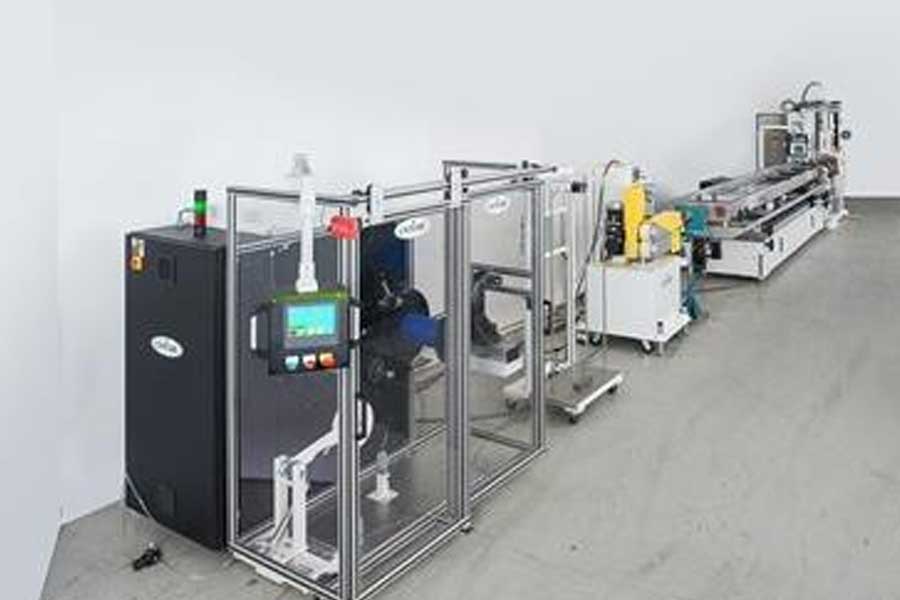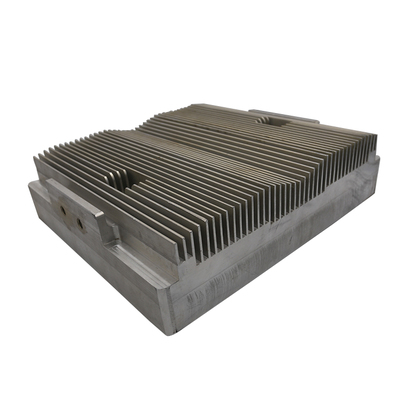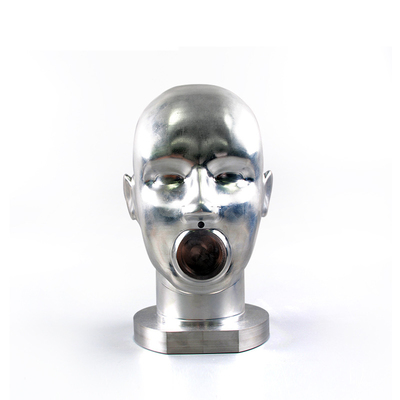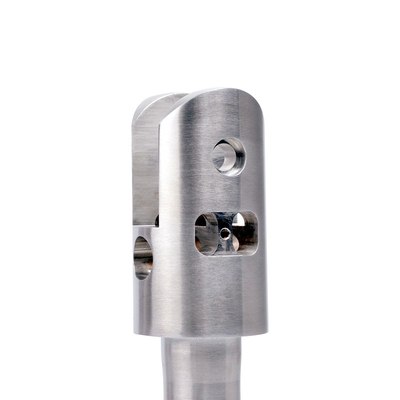How do pipe processors develop and purchase the entire production line?
Most extrusion lines for pipes are very basic considerations: how to process this material into this product with the speed and efficiency required to achieve the return on investment? In the end, these problems are transformed into a series of requirements, and then finally transformed into material specifications and equipment systems: extruders, molds, sizing methods, calibration tools, cooling systems, pullers for speed control, and others.
Sometimes, a processor can develop and purchase an entire production line at one time, fully complying with materials, products, and current production requirements. Moreover, if they are lucky and successful, they can use this product line to produce high-quality products for long-term customers.
At other times, processors may wish to adjust existing extrusion equipment and tools to respond to business and competitive needs. There are many reasons: the need to increase production or increase profits, customer gains and losses, changes in product specifications or dimensions, the need to produce existing products of different sizes, or the need to replace material suppliers.

However, there are risks and difficulties in adapting existing tools and equipment, which may result in problems rather than cost savings. The following is the experience of pipe extruders compiled by the editor of Xianji.com, discussing the problems caused by them, the types of problems, and several common situations found in the suggestions to solve them with the least difficulty.
Ideal: Everything is ready
To see what might go wrong when making changes to pipes and extrusion equipment, it is important to first understand what is "correct" in order to make it work. Ideally, any new extrusion line should be designed to process specific materials at a specific speed, through a specific mold, and at a specific temperature and at a specific speed, and to process specific materials through a properly designed mold and a proper cooling process. It is calibrated to a controllable size. Everything is in balance:
•The extruder is suitable for material mixing and productivity.
•Mold size is suitable for material characteristics and product size;
• Calculate the fall rate, so the predicted size of the extruded cone matches the entrance of the sizing tool;
•Choose the correct sizing method, prepare calibration tools, and fully cool them to meet product requirements;
• Production runs smoothly at the selected production line speed; the line is stable.
Reality: constant change, daily challenge
So, what might go wrong with this perfect photo? What are the common situations that processors encounter that will cause extrusion challenges or cause problems or calculation errors? Can the processor adjust its capacity to deal with these problems? Or is it necessary (or more necessary) to invest and reassemble to obtain the required product quality and return on investment?
1. Change the size of the tube or tube:
Usually, the processor of the special tube or tube needs to make small size changes in the product, or use the same material to produce products with slightly different sizes. For example, a manufacturer of 3/8-inch tubing. The pipe (0.3750 inches in diameter) may get a 1/4 inch order. Tubing (0.25 inches in diameter). The processor decided to immediately check whether there is an existing 0.3750-inch chip, rather than immediately invest in a new chip. The mold can use the new calibration tool to complete this job. Experience has shown that in some cases, molds designed for larger diameter products can be used to produce smaller diameter products. But the ability to do so largely depends on the material. Materials that exhibit a high degree of shrinkage are very tolerant of size reduction. Here are a few examples:
Many medical tube manufacturers are familiar with Pebax (Arkema's polyether block amide), which is a highly viscous TPE material with a high shrinkage rate. Smaller thin-walled tubes (0.125 inches outside diameter x 0.008 inches wall) will use a pressure drop of 50% or more because this material is more viscous and pulls down quickly when leaving the hot die. So, of course, 0.375 inches can be used, and the mold produces ¼ inches.
A similar but more challenging size reduction task might involve the use of 2 inches. The PE mold, coupled with the new sizing tool, can process 1.5-inch pipes. Since PE's retracement is relatively moderate, it is more difficult to manage. Therefore, there will be some compromises, such as slower line speed or greater threat of process instability. In this case, starting from 2 inches to 1.5 inches pipe may mean that you have to pull the calibrator out of the mold to give the material a chance to fall in order to transfer it to a calibration tool suitable for 1.5 inches. Otherwise, the cone of the extrudate will "fill up" the opening of the calibrator, so that it sometimes has to be folded to pass (producing tube irregularities downstream), or it will not pass at all.
Therefore, in some cases, it can be "smaller" according to the material to be extruded. An impossible situation involves materials such as rigid PVC. The fall rate of this material is so low that you can never reach the 2-inch level. The size is reduced to 1.5 inches. You need a new mold and new tools.
2. Increase productivity/speed:
When a production line is running well, there is always a question: "Can it continue to produce? But is it more productive? The answer is again, it depends on the material you want to extrude and the final product Size. Experience has shown that if you increase the speed of the puller and the extruder at the same time, and the running material can withstand this change, the line speed may increase by 20%. For example, the pressure drop and expansion rate of the material are not high. For example, PE, PP or other polyolefins.
Of course, if you choose to increase the speed of the production line and the output of the extruder, it will increase the risk of process instability. Higher extruder RPM tends to increase the shear force of the material in essentially the same way as increasing the temperature profile of the material. Increasing the line speed may also require you to adjust the amount of material entering the extruded pipe, or adjust the "adjustment size" of the contact tool, because higher line speeds are related to greater shrinkage of the final product.
3. Replacement of material suppliers:
Processors must constantly evaluate the quality of the materials they purchase, as well as the ability of the suppliers and manufacturers to provide the materials. Sometimes, the processor decides to make changes, which may affect the stability and performance of the pipe extrusion line.
For "same" types and grades of materials, small differences in key characteristics are enough to make the pipe and pipe extrusion process abnormal and require time-consuming adjustments. For example, a processor that produces nylon tubing for a new customer may choose a better grade of material. Moreover, based on their experience with the material, the processor’s extrusion team will provide tools and "trial-produce" the production line to achieve perfection.
Later, in order to take advantage of the high prices, processors purchased materials from other suppliers. But this may not work: extrusion efficiency will suffer because the "same material" is not exactly the same-the molecular weight distribution is wider. As a result, it has a greater tendency to expand as it exits the die, causing excess extrudates to "enter" and pass through, resulting in periodic overpacking of calibration tools and inconsistent tube walls. Finally, after a lot of adjustments and a lot of waste, the shrinkage problem was corrected and the production line stabilized. (If this material conversion occurs in the reverse direction, the lack of expected expansion can also cause pressure drop problems, because the extrudate cannot "fill" the calibrator, which is built with previous materials in mind.)
The lesson here is very simple: if you want to squeeze out consistently, you must purchase consistent materials. Establish a tolerance window for the molecular weight distribution of the material you buy, and stick to that window.
4. Correctly determine the size and calibration:
As with other pipe extrusion processes, the experience of size determination shows that the correct method and the wrong method, many right and wrong depend on the material.
Calibrate the pipe in the calibrator. The calibrator is a kind of heat exchanger that can use contact, non-contact or mixed sizing methods to control the OD, ID and wall thickness of the product. The sizing method will solidify the skin of the product during initial cooling. Providing an appropriate amount of total cooling residence time is essential to ensure the final size of the product, as the product will continue to shrink until the cooling is complete. For thin-walled to medium-thickness to 0.060 inch thick walls, the general cooling guidelines require about 30 seconds of cooling time, while thicker walls of 0.100 inch require 1 minute or more.
Previously, we noticed the importance of calculating the pressure drop of the extrusion cone to match the inlet of the calibrator. The correct size determination, and the correct size determination method that matches the material type, tooling and water/lubrication requirements are essential for smooth downstream extrusion (see Table 1).
If you do not do well, you will continue to work hard:
• The production speed is slower than expected, and the production line speed cannot be "correct";
• "Overpacking" sizing tools;
• Inconsistent surface finish/adhesion, including "ch cracking" marks due to lack of lubrication.
• Unacceptable size changes, resulting in the constant need to "adjust" settings.
Among the three methods shown in Table 2, contact and non-contact sizing methods are more common so far. Non-contact and hybrid sizing methods are used to classify "sticky" materials that require water lubrication to smoothly enter the vacuum cooling tank. In the case of mixed sizing, the initial contact with water occurs in the water-filled quenching chamber directly in front of the vacuum cooling box. The chamber “pre-skins” the product before it enters the cooling box and undergoes regular contact shaping.
For subtle changes in product size, non-contact sizing is the most tolerant. Because water, rather than metal, is in contact with the pipe, the pipe diameter may increase by 0.020 to 0.030 inches without the need to replace the lubrication ring in the well. However, the contact size and tool tolerance are much lower. Making large-diameter products that must touch the size always requires new tools. As the tube shrinks to its final size, it is processed into the "adjusted" tube size at successive points of processing.
The biggest problem of sizing occurs when people need a non-contact method and use contact sizing tools by mistake. Incorrectly inserting viscous soft materials through the contact mold will cause the product to stick/slip due to the lack of lubricant on the surface of the tool, resulting in messy outer packaging or "ch-crack" marks.
Another mistake involves forgetting or confusing which materials must be "wet" (using water well lubrication) and which materials cannot be "wet". For example, the polyolefin must be run "wet" using a water well, otherwise the polyolefin will not be able to withstand the contact size. However, if you subsequently switch to a harder material (such as PVC) but fail to remove the water well, it will cause sizing problems, because exposure of the PVC to water will start before the contact sizing in the vacuum chamber "Frozen prematurely" its dimensions.
For many processors, pipe extrusion is still very much like an art in appearance and feel, because it seems that there are too many judgments to be made, so there are many factors (regardless of size) that "have to be correct" to make the process run properly. However, if you organize and utilize design, material and production experience, you may find that you can not only master the process of the pipe products currently being produced, but also cost-effectively expand the functions of the equipment and process to gain greater flexibility Sex, productivity and output.
Sometimes, you need new equipment, new molds or tools, or improved controls to get the job done. But not always. In our experience, many processors are surprised by what they can learn and accomplish.
Link to this article: How do pipe processors develop and purchase the entire production line?
Reprint Statement: If there are no special instructions, all articles on this site are original. Please indicate the source for reprinting:https://www.cncmachiningptj.com/,thanks!
 3, 4 and 5-axis precision CNC machining services for aluminum machining, beryllium, carbon steel, magnesium, titanium machining, Inconel, platinum, superalloy, acetal, polycarbonate, fiberglass, graphite and wood. Capable of machining parts up to 98 in. turning dia. and +/-0.001 in. straightness tolerance. Processes include milling, turning, drilling, boring, threading, tapping, forming, knurling, counterboring, countersinking, reaming and laser cutting. Secondary services such as assembly, centerless grinding, heat treating, plating and welding. Prototype and low to high volume production offered with maximum 50,000 units. Suitable for fluid power, pneumatics, hydraulics and valve applications. Serves the aerospace, aircraft, military, medical and defense industries.PTJ will strategize with you to provide the most cost-effective services to help you reach your target,Welcome to Contact us ( sales@pintejin.com ) directly for your new project.
3, 4 and 5-axis precision CNC machining services for aluminum machining, beryllium, carbon steel, magnesium, titanium machining, Inconel, platinum, superalloy, acetal, polycarbonate, fiberglass, graphite and wood. Capable of machining parts up to 98 in. turning dia. and +/-0.001 in. straightness tolerance. Processes include milling, turning, drilling, boring, threading, tapping, forming, knurling, counterboring, countersinking, reaming and laser cutting. Secondary services such as assembly, centerless grinding, heat treating, plating and welding. Prototype and low to high volume production offered with maximum 50,000 units. Suitable for fluid power, pneumatics, hydraulics and valve applications. Serves the aerospace, aircraft, military, medical and defense industries.PTJ will strategize with you to provide the most cost-effective services to help you reach your target,Welcome to Contact us ( sales@pintejin.com ) directly for your new project.

- 5 Axis Machining
- Cnc Milling
- Cnc Turning
- Machining Industries
- Machining Process
- Surface Treatment
- Metal Machining
- Plastic Machining
- Powder Metallurgy Mold
- Die Casting
- Parts Gallery
- Auto Metal Parts
- Machinery Parts
- LED Heatsink
- Building Parts
- Mobile Parts
- Medical Parts
- Electronic Parts
- Tailored Machining
- Bicycle Parts
- Aluminum Machining
- Titanium Machining
- Stainless Steel Machining
- Copper Machining
- Brass Machining
- Super Alloy Machining
- Peek Machining
- UHMW Machining
- Unilate Machining
- PA6 Machining
- PPS Machining
- Teflon Machining
- Inconel Machining
- Tool Steel Machining
- More Material





